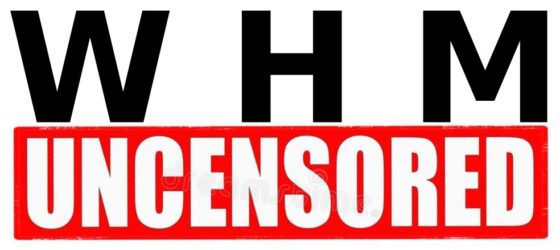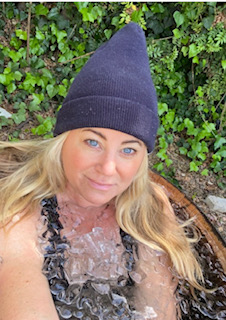The first time I heard the words “Wim Hof,” it was from my brother, Alex, who praised him to the skies several years ago. Alex is a genetic nutrition expert and a fan of pushing limits. Any time he signs me up for an activity (mountain biking, river rafting) and tells me it’s no big deal, I know my life is in danger. He showed me a 2012 Vice documentary called The Superhuman World of Wim Hof: The Iceman about this Dutch extreme athlete, who created the method after a series of impressive feats including swimming under ice and running a half marathon above the Arctic Circle, barefoot and in shorts. “The cold,” Wim said, “brings us back to our inner nature.”
His method, he said, also supercharges the immune system by challenging and retraining the body. The rapid, circular breathing and ice baths briefly caught my attention. My brother began the practices in earnest, while I tried the breathing for a couple weeks, took one cold shower, and then let it go the way of several other trends I’d embraced and abandoned: Keto, Crossfit, once a week cheat days. My brain was full. I’m a divorced parent of two now-teenage boys, I have a full time job, I write stuff, and I have a meadow garden and an elderly dog. Anything beyond those categories tends to fall by the wayside.
Then came the Covid Year. I work in communications at a private school. In March 2020, most of us were sent home to work for several months. I set up my office at the kitchen table, and Zoom became the lifeline-du-jour. When working from home and noticing – along with all of the things falling apart in various rooms – my haggard appearance on the Zoom camera, I started to take stock of my life. After a tough divorce, I had grown accustomed to utilizing my body as merely a vehicle to get me from A to B. A vehicle I ran into the ground. I was overweight and inflamed, I was tired all of the time, I was working crazy hours and getting rashes from stress.
Some folks have found they became less healthy during our quarantine year (understandable, for a thousand reasons), but for me it was more of a reverse engineering back to wellness. I chose a primarily Paleo diet and started walking daily. Out of necessity, we ate every meal at home. I started to enjoy cooking healthy meals again. Weirdly, I also started craving the idea of ice baths. I wanted to start the breathing exercises again. Something had broken loose inside me. I wanted a dramatic change.
I ordered a used wine barrel off of Ebay, from a winery in Paso Robles. My parents gave it to me for my birthday. I rolled it into the backyard, and added 70 lbs of ice and water from the hose. I held off on eating beforehand as these activities are not recommended when your digestion is engaged. I did my breathing first: three rounds of 30 deep rhythmic inhalations and exhalations, each culminating in a one to two minute breath hold, followed by a 15 second inhale. Then I pushed that inhale further, into my head and chest. This breathing technique, also called controlled hyperventilation or power breathing, increases the amount of oxygen available to the body (I’m continually striving to increase my rounds and retention times).
I got on my stepstool and lowered myself into the icy water. Ouch. It hurt! A lot. I fought the urge to flee or hold my breath. I slowly submerged myself up to my shoulders, my legs crossed underneath me. After about a minute, my body calmed down. The pain went away. My surroundings seemed sharper, brighter. I looked up at my jacaranda tree, marveled at the intricacies of the leaves. The wind wove through its branches, like music. I felt at peace. My mind was empty of everything except the sensory details of that exact moment. My body was so focused on making sure I survived the cold that I couldn’t distract myself with thoughts.
It was like no other meditation I’ve ever done, including Transcendental Meditation with a mantra. This was the mother of all mindfulness hacks. I no longer felt the cold. I lost track of time, blissed out under my tree. I got out after my timer went off: 10 minutes. It turned out that was a bit too long for my first time, and it took a few hours to warm back up with clothing layers and movement. I was supposed to work up to the ice baths with short cold showers, but I’m not a patient person and sometimes I skip steps.
Over the next several months, I made a ritual out of doing ice baths at least once a week. I did the breathing exercises daily and noticed an improvement in my stress management and my ability to fall asleep and sleep more soundly. I felt calmer. My skin improved. In the winter time, I expanded my cold immersion to the ocean. It became a sacred act and each time I entered the water, I felt a little bit reborn, like I had reclaimed another part of myself. The discomfort upon first entering the cold was quickly replaced by a deep sense of wellbeing.
Cold exposure and deep breathing also stimulate the vagus nerve, an important part of the parasympathetic nervous system connecting many organs including the brain, heart, liver and gut. Having low vagal tone – meaning it’s impaired – can lead to inflammation, anxiety, depression and gut issues. The Wim Hof Method’s success in improving vagal tone is well-documented in many scientific studies.
The breathing takes 15-20 minutes per day. The ice bath involves some set up (I now freeze my own giant cubes in a chest freezer) but even that is minimal. People buy garden troughs at Home Depot or repurpose chest freezers; there are a million ways to create the ice bath environment. For those with mobility challenges, even plunging your face in ice water will stimulate the vagus nerve and provide benefits comparable to a full body immersion.
The Wim Hof method is by far the best biohack I’ve come across and the only one I’ve maintained longer than a few months. The lessons you learn in the cold stay with you; you gain resilience and a greater ability to focus. The breathing greatly benefits your entire physiology over time. And it’s all free, unless you buy ice! For more information, I highly recommend these resources:
Website: The Wim Hof Method
Book: The Wim Hof Method: Activate Your Human Potential
(Article originally appeared in @tableauofficial magazine)


